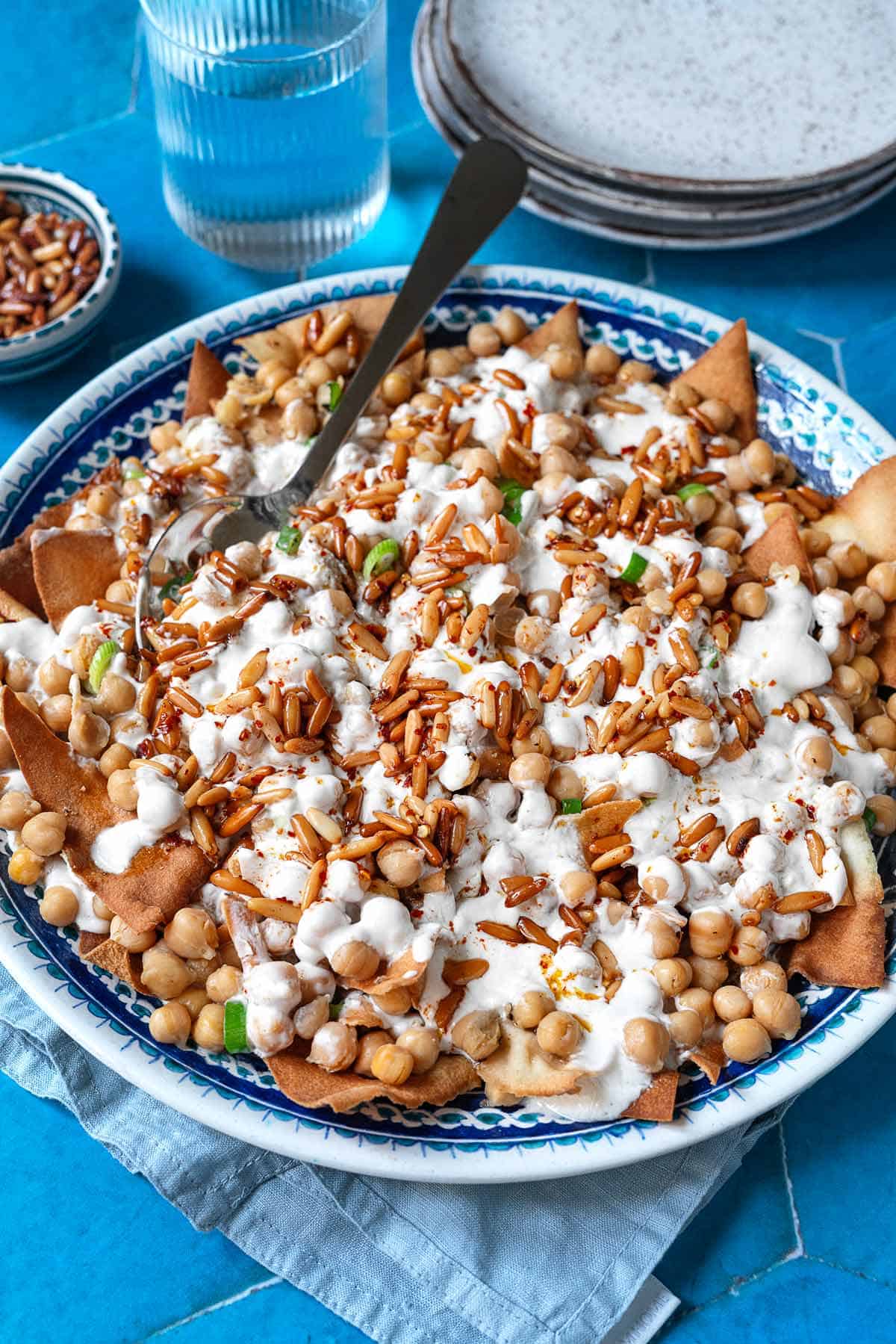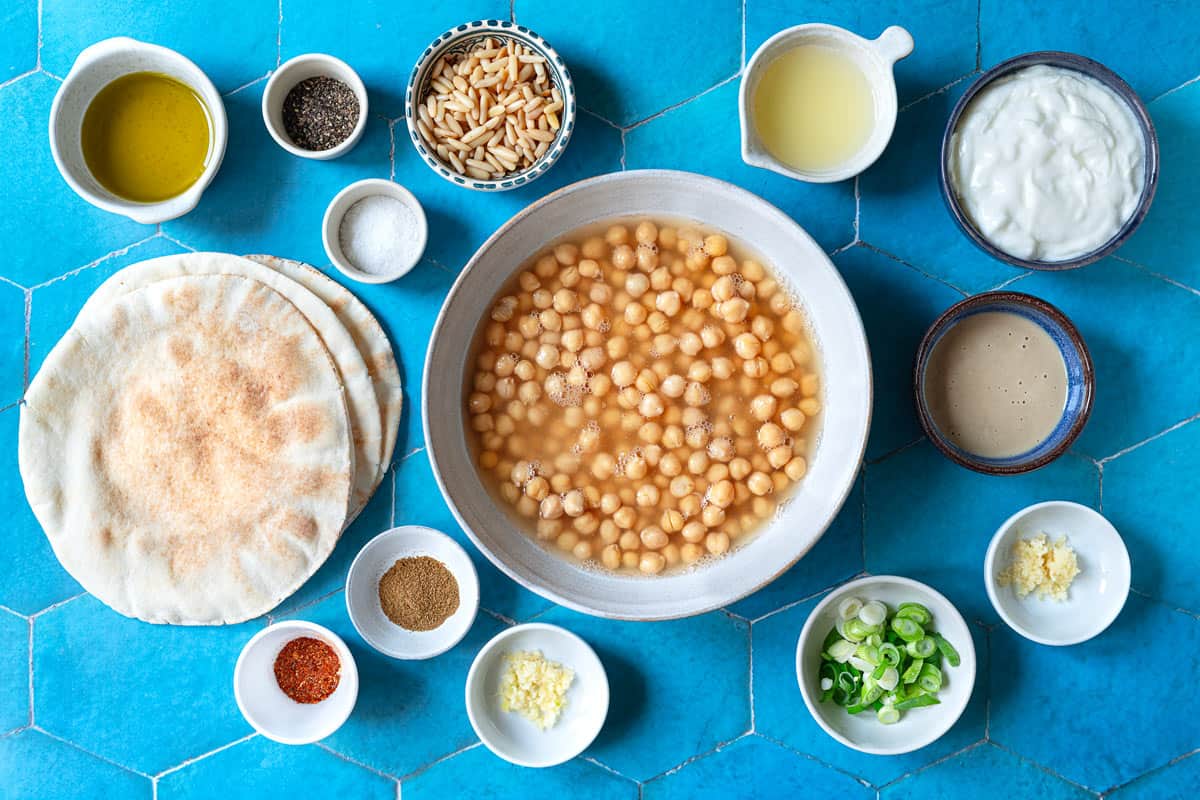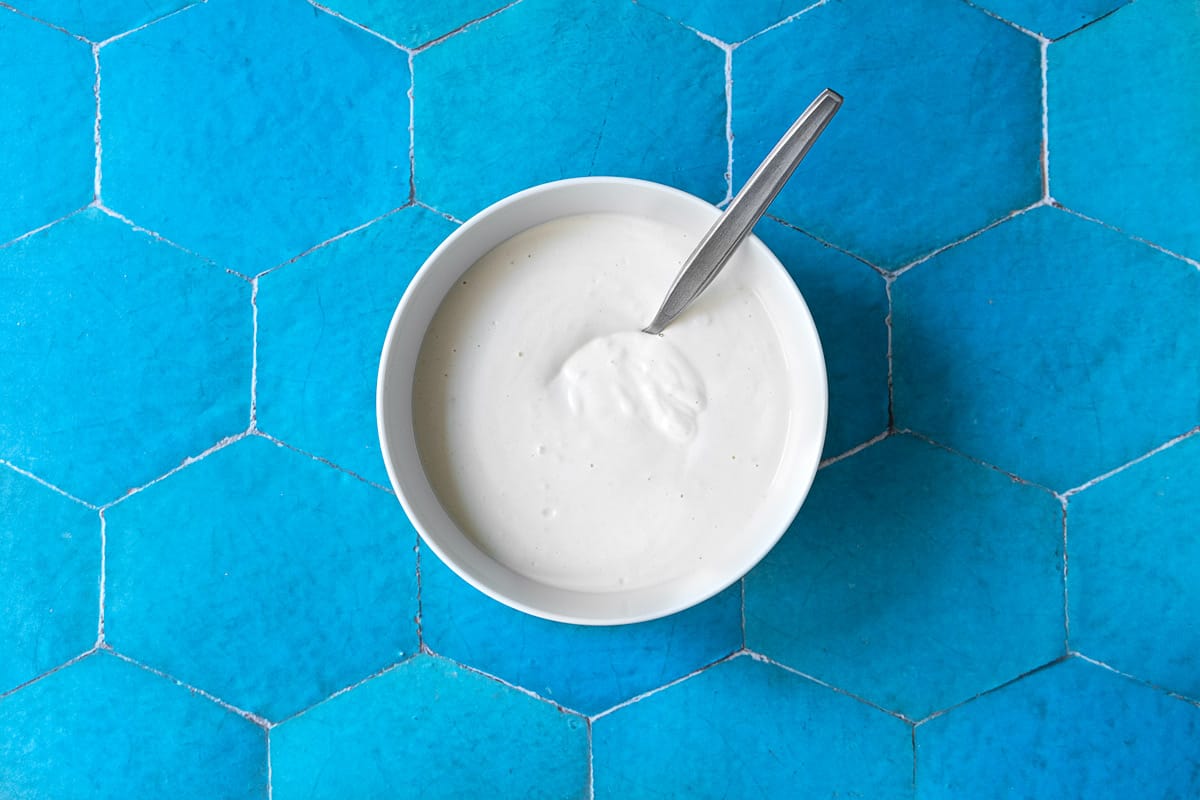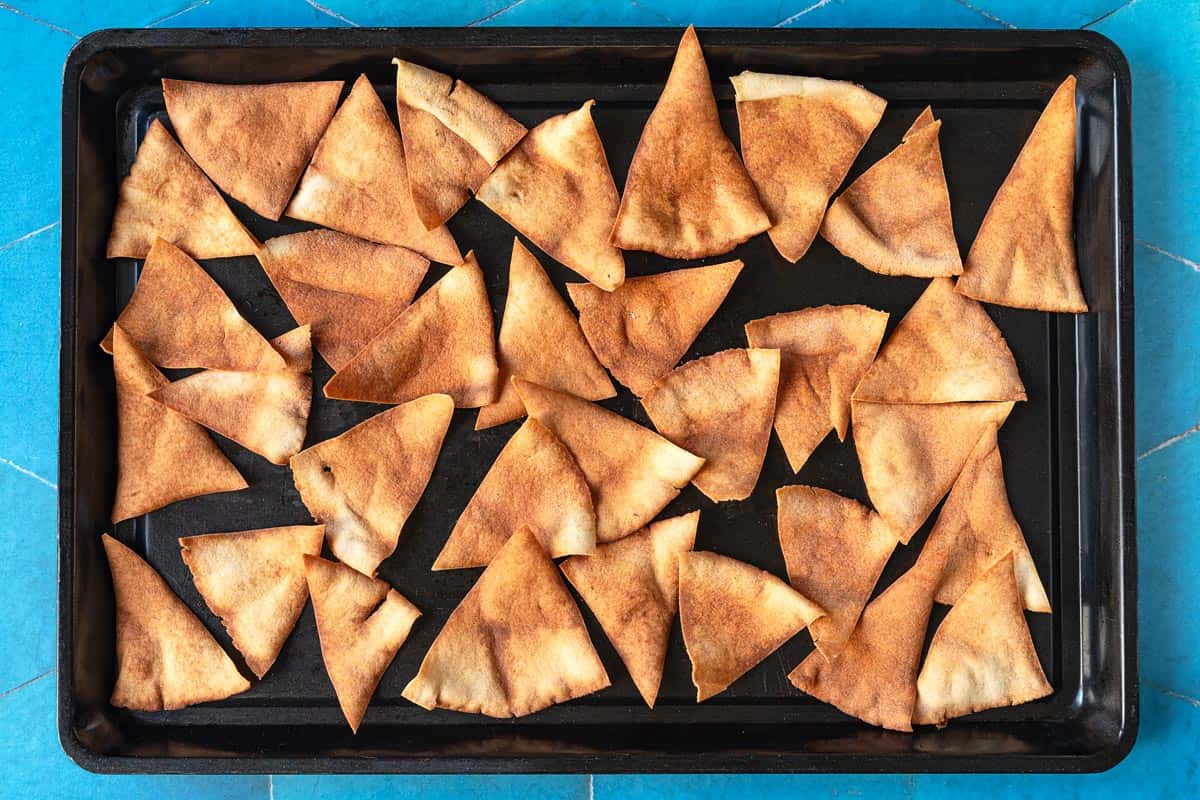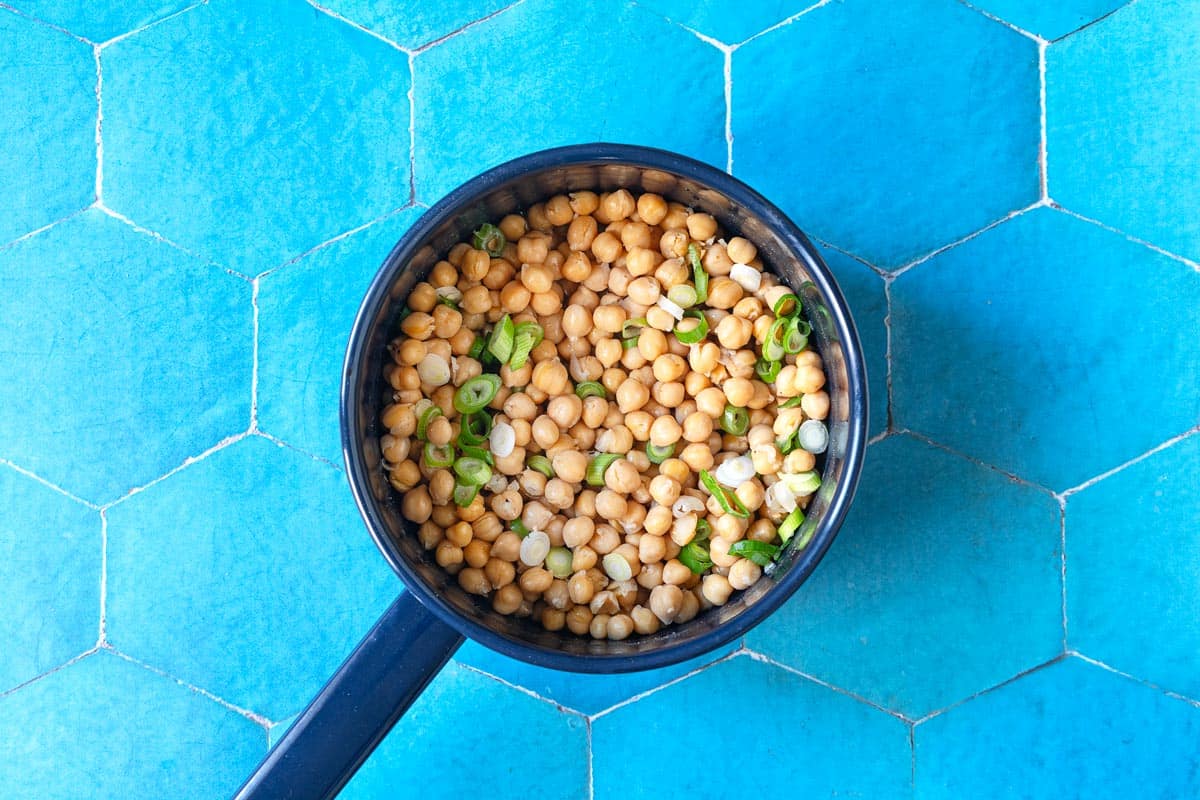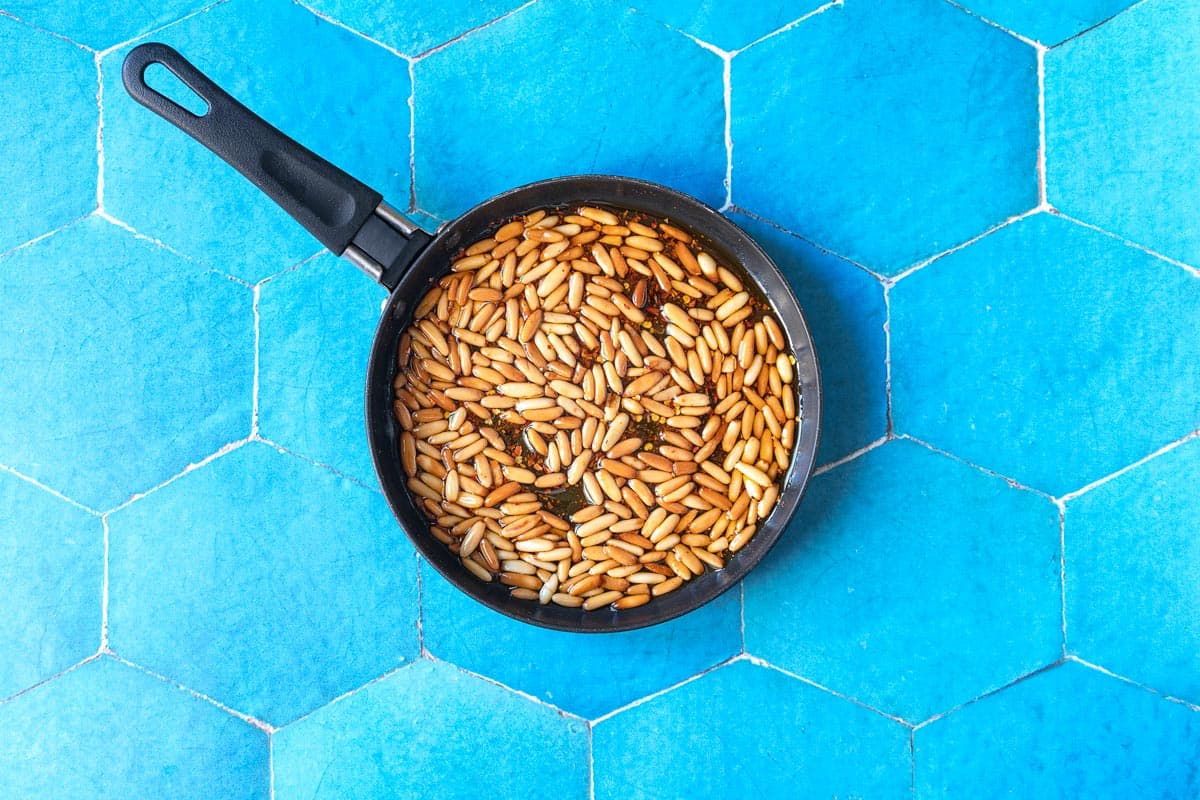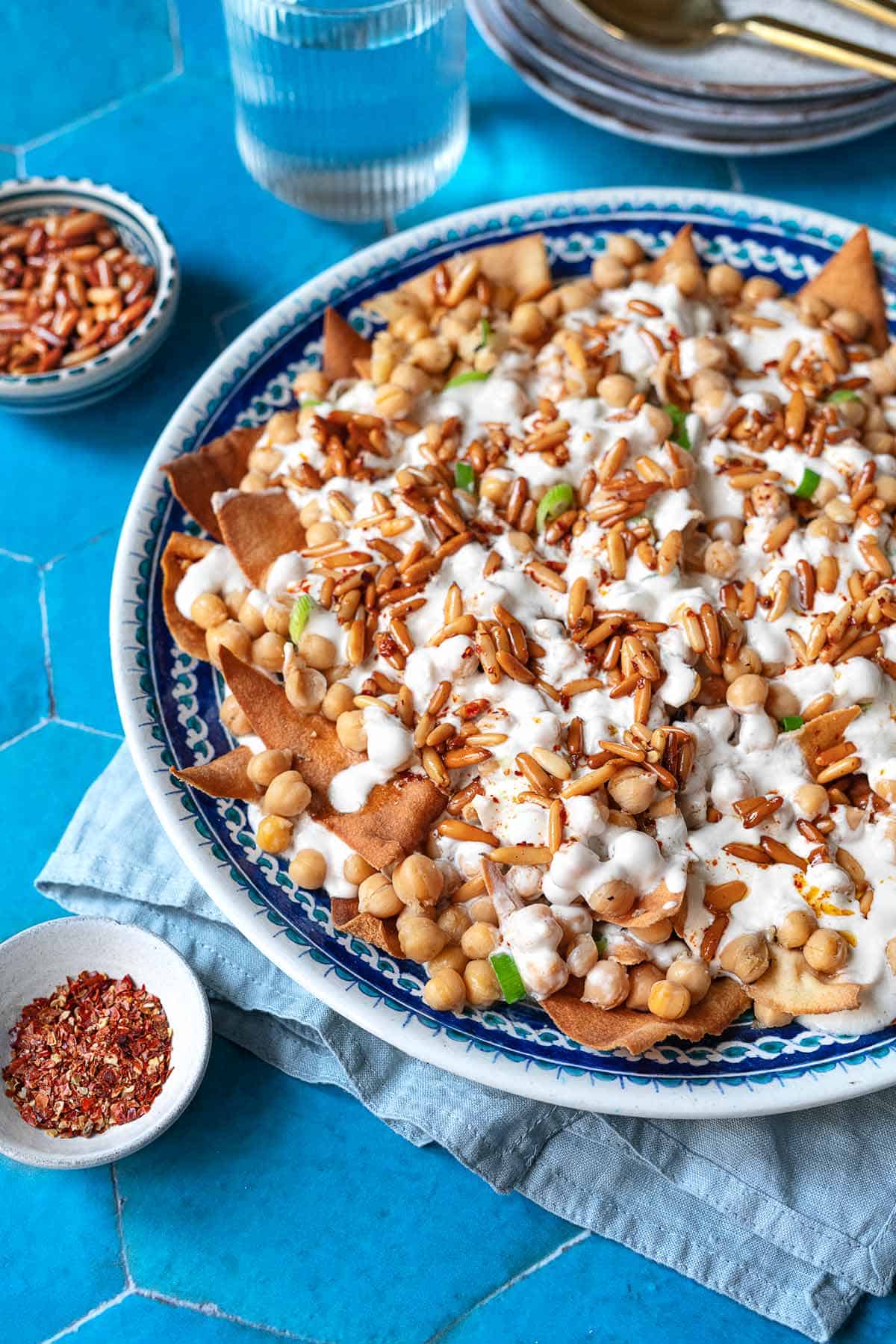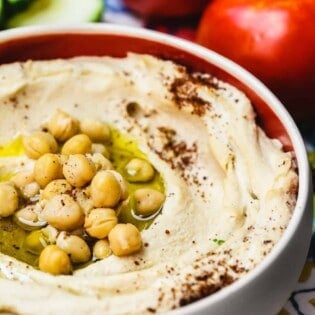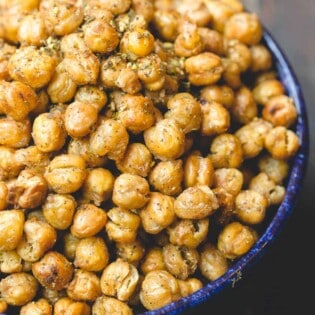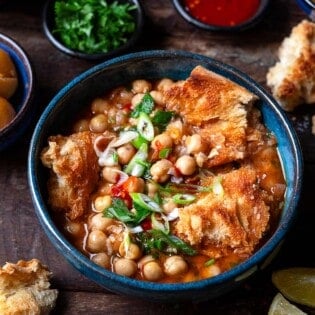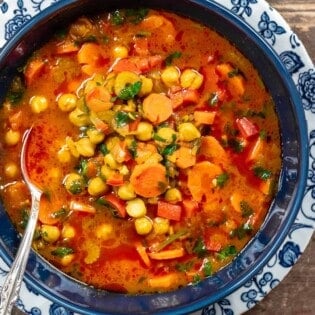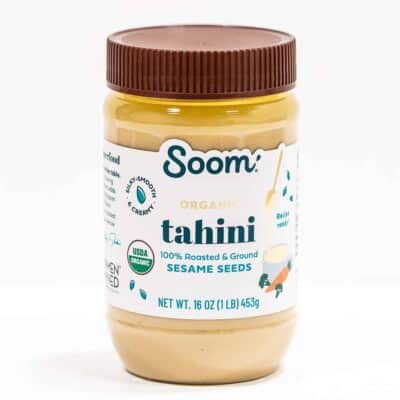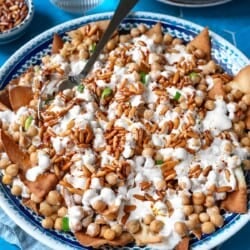Fatteh is a popular comfort food you’ll find in Egypt and parts of the Levant, where it’s often served at breakfast. However, I love it for a quick weeknight dinner or appetizer to share. In addition to being delicious, Fatteh is a brilliant way to make use of day-old pita or flatbread. For this recipe, I split pita in half, brush it with olive oil and bake until it’s crispy. Then I layer on spiced chickpeas (I just use canned), and garlicky, nutty yogurt thanks to the addition of tahini. I finish the whole thing with toasted pine nuts and Aleppo pepper infused olive oil. Start to finish this recipe comes together in just 20-minutes! Think of it as a healthy, Middle Eastern version of nachos. I mean, who wouldn’t want to snack on these before the next big game?My favorite thing about fatteh, aside from layers of tender, creamy, crispy textures, savory spices, and garlicky yogurt, is that you’re meant to share it. Fatteh embodies the Middle Eastern spirit of hospitality. I like to serve fatteh as a part of a mezze spread, a snacky lunch, or a stand alone appetizer. Fattah pairs well with fresh salads like my 3-Ingredient Mediterranean Salad or Tabouli Salad so feel free to mix and match. It’s a delicious way to welcome guests into your home and keep them around the table!Fatteh has been a welcoming symbol of generosity for centuries in Egypt and many other Middle Eastern countries. I’m thrilled to share this delicious recipe with you so it can become a tradition in your family too!
What is Fatteh?
The word fatteh (pronounced fah-tuh) comes from the Arabic word fotat, which literally means breadcrumbs or small pieces of leftovers. Fatteh is the result of some creative cooks making the most out of day old pita. Typically made with layers of toasted or fried bread, chickpeas, yogurt, and a handful of toppings, fatteh is a beloved staple of Middle Eastern cuisine. Believed to have originated in Egypt, fatteh was traditionally served for breakfast or brunch, but like most foods in the Mediterranean it has spread to different communities and cultures, each making it their own. Today, it is an all-day delicacy, with each regional variation reflected in its ingredients, flavors, and traditions.In fact, every family boasts their own unique fatteh recipe. In mine, I keep things pretty classic, simplifying here and there with canned chickpeas, but staying true to traditional flavors and textures.
What You Need To Make Fatteh
One common thread woven among the diverse regions of the Mediterranean is hospitality. Someone will surely invite you to come in for a quick bite and offer you something to eat and tea to drink. Simple, sharable recipes like Fatteh make this type of hospitality possible. It’s quick, easy, and uses just a few simple ingredients you can keep stocked at all times.
Yogurt: Plain yogurt adds a creamy tang with each bite. I like to use whole milk plain Greek yogurt for extra protein and richness, but low-fat and nonfat can be substituted. Tahini: Made from toasted and ground sesame seeds, tahini lends a creamy, nutty flavor and silky texture to the garlicky yogurt sauce. Tahini in the U.S. varies greatly in quality, but, generally speaking, the smoother the better. I prefer to use my favorite brand of tahini, which is Soom. Garlic: Finely minced garlic gives the yogurt a spicy quality and also gently flavors the chickpeas as they simmer. Lemon: I love a boldly tangy yogurt sauce, so I’ve called for the juice of two whole lemons. If you’re more timid about bright flavors, start with one lemon, taste, and take it from there. Pita bread: I use pita pockets sliced in half, as the thinner pieces of pita are better at getting crispy and golden brown and delicious. While store-bought pita chips are an obvious substitute, they’re really not the same as fresh pita chips hot out of the oven (plus, it only takes a few minutes). If you’d like more tips, tricks, and musings on toasting your own pita chips, I’ve written a whole guide to making the best homemade pita chips. Extra virgin olive oil: I reach for a few bottles when I’m making this recipe–though any high-quality extra virgin olive oil you have on hand will work well. I brush the pita with buttery Koroneiki Organic EVOO, and use Early Harvest Greek Extra Virgin Olive Oil as the flavorful finishing oil. Canned chickpeas: A couple of cans and a quick simmer saves you a night of soaking and hours of boiling, but if you’d like to make this dish the more traditional way–and have full control over your ideal chickpea texture–check out my 3 methods for cooking chickpeas. Flavor makers: Ground cumin, kosher salt, black pepper, and Aleppo pepper give this simple dish an intriguing complexity. If you haven’t tried Aleppo pepper, now’s a perfect time to start! It has a distinctly fruity and slightly salty flavor with a perfectly moderate heat level. Green onion: Also known as scallions, green onions are used in this recipe like an herb: stirred into the chickpeas in the final moments, they just barely soften and give bursts of freshness and a mild, slightly sweet allium flavor. I also use it as a garnish and sprinkle some over the top.Pine nuts: I know pine nuts are expensive, but they’re totally worth it for this otherwise very economical dish. Creamy, buttery, pine nuts toast to golden brown like a dream.
How To Make this Fatteh Recipe
Fatteh is traditionally made with dried chickpeas, which are soaked overnight and slowly simmered. I’ve tweaked my fatteh recipe to use canned chickpeas so it’s super easy and quick to make.
Preheat the oven: Heat the oven to 350°F. Make the yogurt sauce. In a small mixing bowl, whisk together the yogurt, tahini, garlic, and lemon juice. Season with a big pinch of kosher salt. The sauce should be loose but creamy. If your sauce is very thick, whisk in a little bit of water at a time. Leave it on your counter to warm to room temperature while you do the rest. Prepare the pita: Brush the pita bread with extra virgin olive oil on both sides then slice it into small triangles. I prefer to use pita pockets so I can split it in half for thinner, crispier pita bread chips.Toast the pita: Spread the pita triangles on a sheet pan in one single layer. Toast at 350°F until nice and crispy, 5-7 minutes. If you’re using thicker bread, give it some time to get crispy. You want it to have a good crunch so it doesn’t get soggy with the sauce.Simmer the chickpeas: Put the chickpeas in a saucepan. Cover with 2-inches of water. Add the cumin, a healthy pinch of kosher salt, a big grind of black pepper, and one minced garlic clove. Simmer to allow the chickpeas to soften and absorb most of the flavorful broth, about 15 minutes. Finish the chickpeas: When the chickpeas are tender, turn the heat off, taste, and adjust the seasoning with more salt or pepper to your liking. Stir in a drizzle of olive oil and the green onions. Toast the pine nuts: In a small skillet, warm 2 tablespoons of extra virgin olive oil over medium heat. Add the pine nuts and stir regularly as you watch them turn to golden brown, about 2-3 minutes. Add the Aleppo pepper (if using). Swirl the pan until the oil turns a beautiful amber color, then immediately turn off the heat. Assemble the fatteh: Spread most of the crispy pita chips on a large serving dish or platter. Top the pita with half of the cooked chickpeas, then half of the garlicky yogurt sauce, then the remaining pita, chickpeas, and yogurt sauce.Garnish: Pour the hot toasted pine nuts and Allepo pepper olive oil over the top. Serve immediately!
What To Serve with Fatteh
Fatteh is a loving way to welcome friends and family into your home. It goes best with other Mediterranean mezze as part of a spread and because fatteh has all the creamy, soft, and crispy notes covered, opt for something fresh to go with it. Whip up a 3-Ingredient Mediterranean Salad or Tabouli Salad. Even better, bake some extra pita chips to crumble on Fattoush Salad (because no one has ever complained about having extra pita chips)!
Other Delicious Canned Chickpea Creations
Browse all Mediterranean recipes. Visit Our Shop.
Easy Hummus Recipe (Authentic and Homemade)
How to Make Crispy Roasted Chickpeas
Lablabi (Tunisian Chickpea Stew)
Easy Mediterranean Chickpea Soup Recipe



